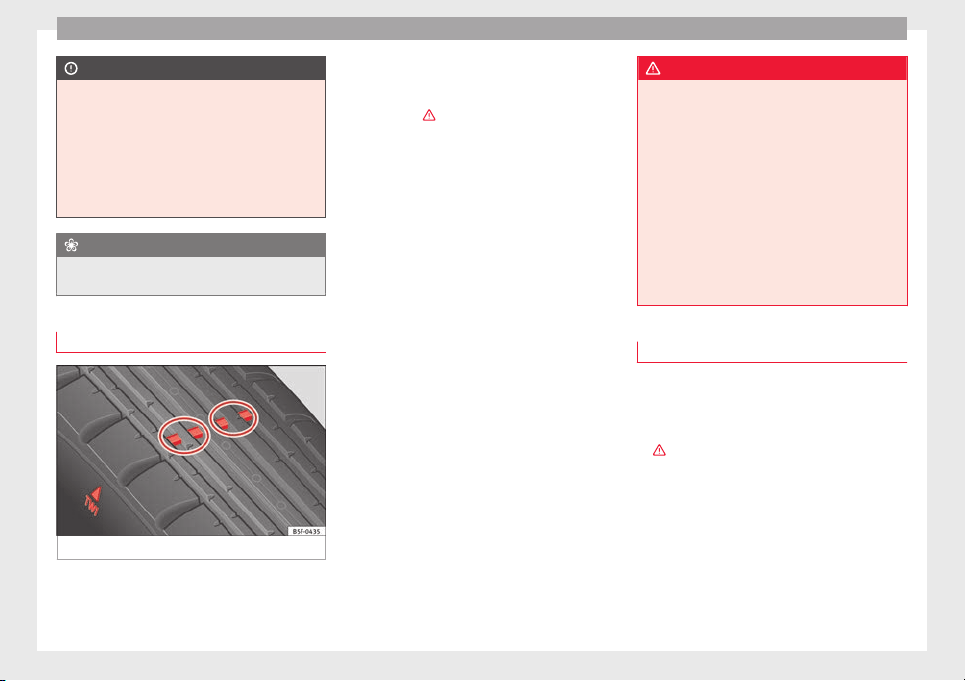Loading ...
Loading ...
Loading ...

Advice
CAUTION
●
Take c
are not to tilt the manometer when
placing it on the valve. Otherwise, the valve
may be damaged.
●
If tyre valves are not protected by caps, or if
the caps are not screwed on correctly, they
may become damaged. Check that the caps
are identical to the standard caps and have
been correctly tightened.
For the sake of the environment
Under-inflated tyres will increase fuel con-
sumption.
Wear indicator depth profile
Fig. 175 Tyre tread: tread wear indicators
Tread depth
C
er
t
ain driving conditions require a deeper
tread, as well as needing the tread to be ap-
proximately the same on the front and rear
tyres. This is particularly important when
driving in winter, in cold temperatures and on
wet roads ›››
.
The minimum tr
e
a
d depth required by law in
the majority of cases is 1.6 mm, measured in
the tread grooves next to the tread wear indi-
cators. Observe legal requirements in each
country.
The performance of winter tyres is much re-
duced when the tread has worn to 4 mm.
The tread depth of new tyres may vary, ac-
cording to the type and make of tyre and the
tread pattern.
Wear indicators on the tyre
The original tyres on your vehicle have
1.6 mm high ››› Fig. 175 tread wear indicators
running across the tread. A number of these
indicators are equally spaced around the tyre
tread. Certain marks on the tyre walls (e.g.
the letters “TWI” or other symbols) indicate
the position of the wear indicators.
Tread wear indicators indicate if a tyre is
worn. They must always be replaced before
the tyre tread has worn to the level of the in-
dicator.
WARNING
Driving with worn tyres is dangerous, and
may
lead to loss of control of the vehicle with
serious consequences.
●
Tyres must be replaced before the wear in-
dicators are at the same level as the tread
pattern.
●
Worn tyres have significantly reduced grip,
especially on wet surfaces, increasing the
risk of “aquaplaning”.
●
Worn tyres make control of the vehicle
more difficult in normal or difficult driving
conditions, increasing the braking distance
and the risk of skidding.
Tyre damage
Damage to wheels and tyres is often invisible
t
o the n
ak
ed eye. If you notice unusual vibra-
tion or the car pulling to one side, this may
indicate that one of the tyres is damaged
›››
.
●
Slow down immediately if you think you
h
av
e a d
amaged wheel.
●
Check the wheels and tyres for damage.
●
If tyres are worn, stop driving and seek
qualified assistance.
●
If there is no visible exterior damage, drive
slowly and carefully to the nearest special-
ised workshop and have the vehicle checked.
204
Loading ...
Loading ...
Loading ...